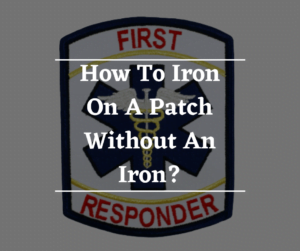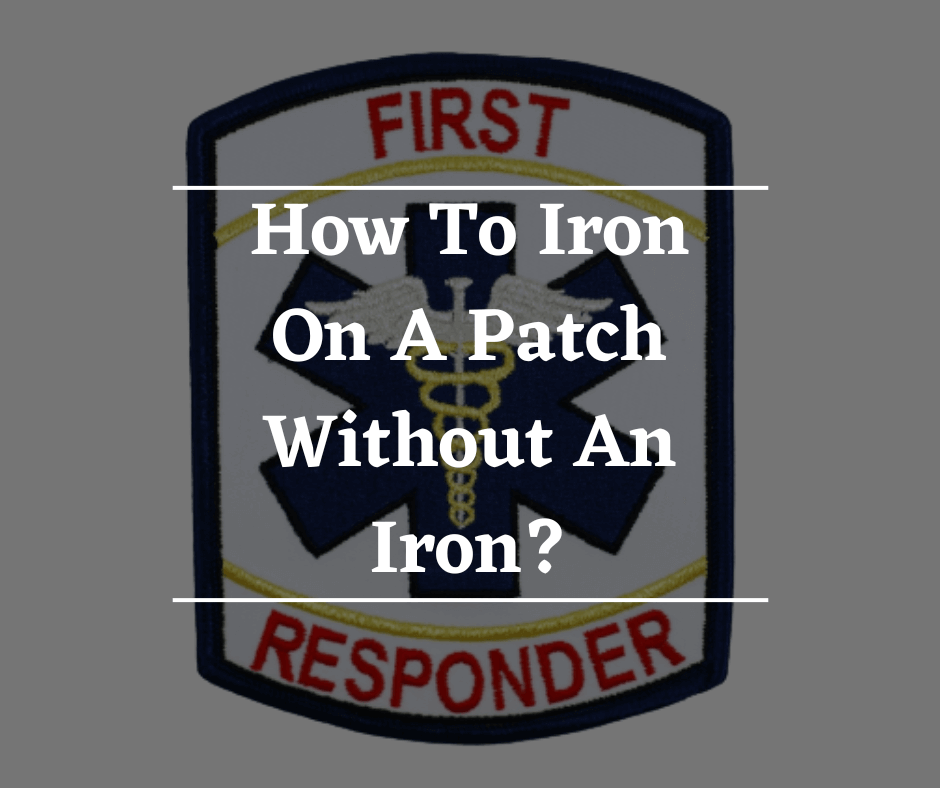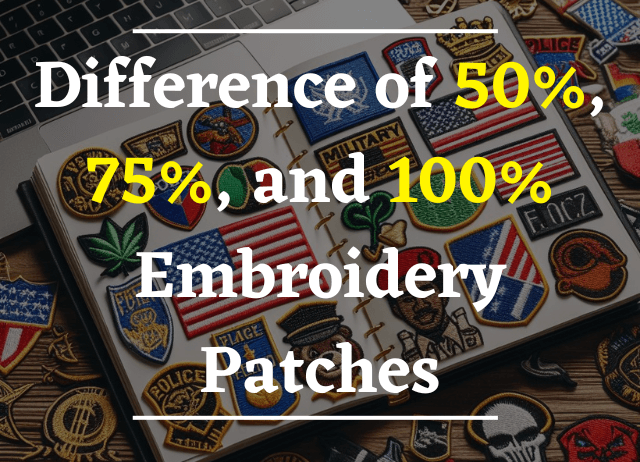How To Iron On A Patch Without An Iron?

Want to add a personal flair to your clothes without using an iron? No matter how much you love clothes, there is always that ONE thing you don’t like about them, and for most people, it’s ironing. I hate ironing. But there is a way around that! You can add patches to your clothes without using an iron.
Yes! You can still easily attach a patch with some basic supplies. Most people don’t know this, but you don’t need an iron to jeans. In fact, there are several ways to do it without using one. In this blog post, I will discuss eight methods for how to iron on a patch without an iron. Stay tuned!
Contents
How To Iron On A Patch Without An Iron – 8 Helpful Methods
1) Velcro Patch
It’s not hard to get Velcro patches, and they’re cheap for what you receive. In addition, a Velcro patch can be used by anybody without special training or experience.
The patch is self-adhesive and may be sewn into fabric or fastened with Velcro, making it suitable for usage on clothing. An adhesive is used with the tape. Put slight pressure on the patch to ensure it sticks to your garment.
You may get them in a wide range of sizes and forms. The option that best suits your requirements is entirely up to you.
2) Glues Or Adhesives
Adhesives or glue on patches for clothes can also be used to do the job securely. After applying the gum to the backside of the patch, place it where you want it, pressing firmly on the fabric with your thumb for a couple of minutes and then checking to see whether it is firmly in place.
You can find a variety of adhesives or glues in the market that can help you attach your patch without an iron. This is probably the easiest method, especially if you are a beginner.
There are different types of adhesives available, so make sure to choose one compatible with the fabric you are using. You can also find fabric glues with a brush for easy application.
3) Pins Or Needles
If you’re looking for a quick fix, you can use pins or needles to attach your patch. Simply place it where you want it, and then use pins or needles to secure it. This method is excellent for smaller ones or if you’re in a hurry.
The compact size and lightweight nature of the included equipment make it an excellent option for users on the go.
Hence, no problem if your iron isn’t working or you don’t have one! This ninja technique will get the job done.
4) Adhesive Spray
This is my favorite method because it is the quickest and most fool-proof. I used to love spraying things down with adhesive when I was a kid. It’s just so satisfying. And it works great for attaching patches! Just make sure to use a repositionable adhesive to readjust it if necessary.
A spray adhesive is a good substitute for heat. You may locate some at any local craft shop or get some online. It’s easy to apply with only a spray, and it saves a ton of money in the process.
That’s the procedure that has to be followed for both textiles and garments. It’s a breeze to go through the steps. Use adhesive spray to its reverse side and allow it to dry before applying it to your clothing or other objects.
5) Using a Frying Pan
Are you feeling confused because you saw a frying pan doing anything other than cooking? Well, it can help you with attaching it as well. Start by heating the frying pan until it’s hot, then place the patch on top. Next, apply pressure to ensure that the its adhesive side melts and sticks to the fabric. You must be thinking why you never thought of this before, right?
6) Using a Hairdryer
A hairdryer can be used as a multipurpose tool, not just for drying your hair. For example, you can use it to attach the patches without an iron.
Hold the hairdryer close to it and heat it until it’s hot enough. Once it is heated, place it on the desired area and hold it until it cools down and adheres to the fabric. It’s just that simple!
7) Hair Straightener
Same working principle as the hairdryer. Both do the job using heat to attach the patch to the clothing. However, I find this method more accurate as you can control the heat better with a hair straightener.
First, you must set the hair straightener to a low heat setting. Place it on the clothing and run the hot iron over it. Be careful not to touch the patch directly with the iron, as it can burn.
Hold the it in place until it cools and adheres to the clothing. And that’s it! The hair straightener might be a little easier to maneuver than the hairdryer.
8) Peel Off The Sticky Sheet
If your patch has a sticky back, then this method is for you! Simply peel off the backing and stick the temporary patches for clothes onto the desired area on your clothing. Voila! You’re done. No iron is required.
Frequently Asked Questions
What can I use instead of iron?
You can use a hair straightener, adhesive spray, needle and thread, double-sided tape, or an iron-on adhesive to attach a patch without an iron.
Can you iron on a patch with a straightener?
Yes, you can use a hair straightener to attach a patch without an iron. Set the straightener to a low heat setting and press down on it for 30 seconds.
How do you attach a patch that isn’t iron-on?
Some patches aren’t iron-on because they have a different type of backing. There are several ways to attach a patch that isn’t iron-on. Some of the most common methods include sewing, gluing, and Velcro.
How do you make an iron-on patch at home?
1. Find or create a design for your patch. You can use an existing image or create your original design.
2. Print the design onto transfer paper.
3. Cut out the design, leaving a small border around the edge.
4. Preheat your iron to the hottest setting.
5. Place the design side down onto the fabric.
6. Cover it with a piece of scrap fabric.
7. Press the iron down onto the patch for 30-60 seconds.
8. Allow it to cool before wearing.
Conclusion
There you go! Eight different ways how to iron on a patch without an iron. As you can see, it’s not that difficult. So next time you want to add a custom touch to your clothing, don’t let the lack of iron stop you. Give one of these methods a try.
Do you have any other DIY iron on patch hacks? If so, please share them in the comments below. Thanks for reading!







